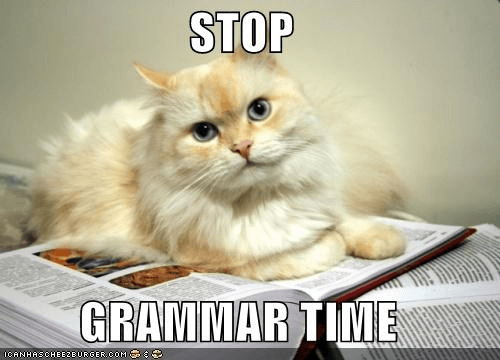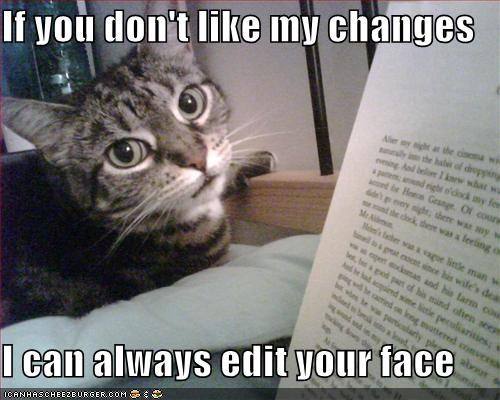Pedantry or Necessity? How to Write a House Style Guide (and Why You Should)
The importance of a house or brand style guide was discussed as part of Content is King series. However, while it definitely provided a good summary of what style guides are and why they’re needed, it didn’t quite capture the blood, sweat and tears that went into creating, disseminating and maintaining our own.
It begins…
The Fresh Egg house style guide started out as a research project, triggered by the ongoing abuse of semicolons and other defenceless forms of punctuation by some of those within the company (you know who you are – or were since the introduction of the house style guide, of course). In addition to spelling and grammar needing to be kept in check, there was also a huge number of industry-specific words and phrases that, largely due to their creators’ fondness for mashing words together and/or interspersing them with random capital letters, would often vary in composition depending on who wrote them.
Thus the Fresh Egg house style guide was born.
 However, one release was, of course, not enough, and since the initial version was sent round the office with a friendly but firm accompanying email, we have reached version number 28 (excluding more minor updates). The addition of industry-specific names and terminology is probably the primary cause for updates, which is understandable considering Fresh Egg’s digital focus. Each update email is accompanied by a few notes detailing the errors the proofing team has been encountering most frequently since the last one and, for my sins, whatever appropriately grammar-themed lolcat I can lay my hands on at the time.
However, one release was, of course, not enough, and since the initial version was sent round the office with a friendly but firm accompanying email, we have reached version number 28 (excluding more minor updates). The addition of industry-specific names and terminology is probably the primary cause for updates, which is understandable considering Fresh Egg’s digital focus. Each update email is accompanied by a few notes detailing the errors the proofing team has been encountering most frequently since the last one and, for my sins, whatever appropriately grammar-themed lolcat I can lay my hands on at the time.
But what are the ingredients of a good house style guide?
Spelling and grammar
While word processors’ spell checkers can help people out to a certain degree, it’s a good idea to spell some stuff out (yes, I went there). Word processors can rarely pick up on more subtle things such as context or slightly more nuanced uses of grammar, meaning that it’s definitely a good idea to at least lay out some of the commonly mixed up or misused words and grammatical rules.
 A few common bugbears include:
A few common bugbears include:
- It’s and its – The former means ‘it is’ while the latter is the correct way to say something belongs to the ‘it’ in question
- Compliment and complement – To compliment is to praise, while to complement something is to make it complete
- -ise and -ize – Words always end in ‘-ise’ in British English (except for in ‘capsize’)
- Apostrophes in plural initialisms (e.g. URLs) – Apostrophes should only be used in these to denote belonging, not just because they’re plural
- Semicolons – Use with caution
Brand style
Making sure your company has a distinctive and professional brand style that is maintained throughout all documentation is another important thing to consider. Here at Fresh Egg we have a separate brand style guide that, unlike the house style guide, details various stylistic aspects such as document layouts, brand colours, protocol to follow in various different kinds of report and so on. Appearance really does matter in most cases, and so it pays to make sure great content looks as good as it reads.
Continuity
At the end of the day, English is a silly, unpredictable language, with lots of strange rules and variations capable of confusing even the most avid grammarian. As such, sometimes the most important purpose a house style guide serves is making sure everyone sticks to the same strange rules and variations. For example, some could be of the opinion that a certain couple of words should be hyphenated, some may believe they should be two and one crazy joker might even think they should actually be fused together into one. Depending on the words and context, all three of these suggestions could be correct, but for the sake of maintaining uniformity, it’s best to pick one and stick with it.
Some things that tend to leave opinions divided include:
- Formatting
- ‘Whilst’ and ‘amongst’ versus ‘while’ and ‘among’
- How to present quotations
- Oxford commas
- Whether it’s ever okay to use exclamation marks
So are house style guides necessary?
I’m probably a little biased when it comes to this subject, but I know I’m not alone in thinking that having a house style guide is pretty much a must! As well as making sure everything your company produces looks and reads professionally, it also can’t hurt to do your part to stamp out such crimes against grammar as mixing up “your” and “you’re” (naming no names).
If you’re thinking of writing a house style guide for your company, here are a few things to bear in mind:
- Terminology – Is there any terminology specific to your industry that needs including?
- Brand – Does your brand employ a particular way of writing or use of particular colours or formatting styles in branded documents?
- Tools – Is everyone using the same version of your primary content production software, for example? Different versions of Microsoft Word can cause all sorts of problems, while the ability to use identical style ribbons company-wide can be a godsend
- Awareness – Will you need to give your employees time to familiarise themselves you’re your house style guide once it is introduced?
- Author – Who will be in charge of writing and maintaining your house style guide?
Still stumped? Don’t hesitate to get in touch if you’re in need of any digital marketing help.
